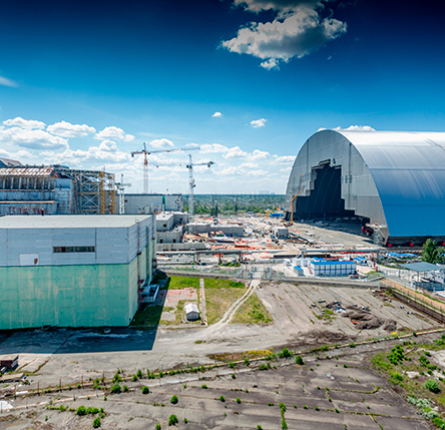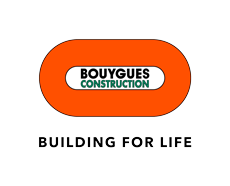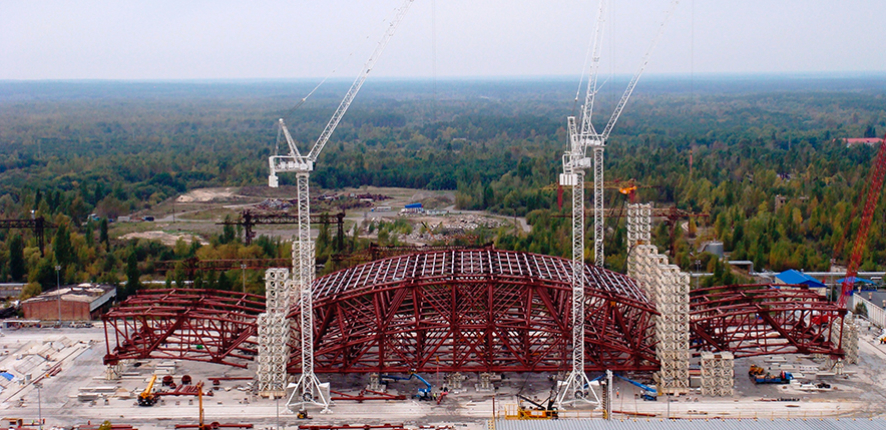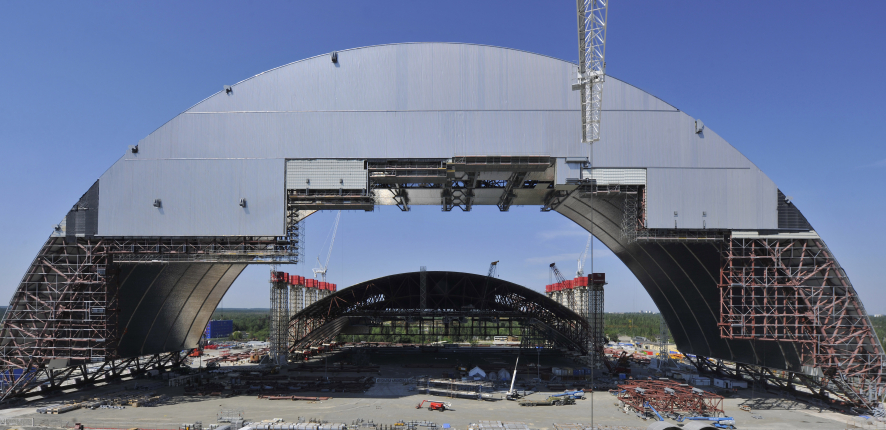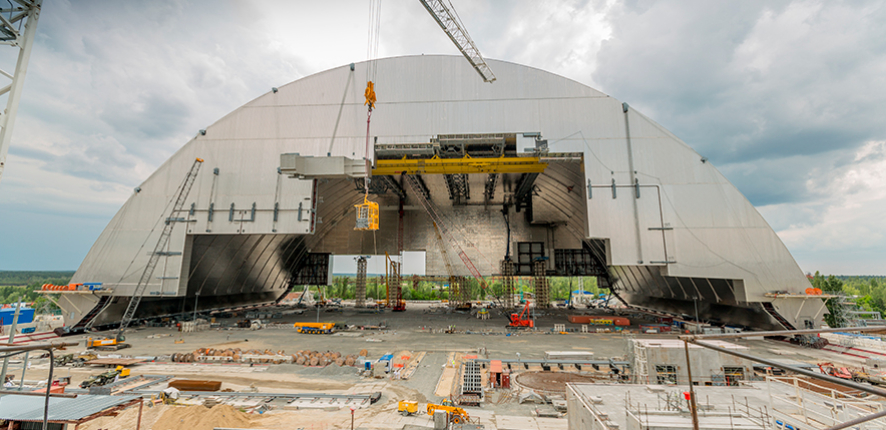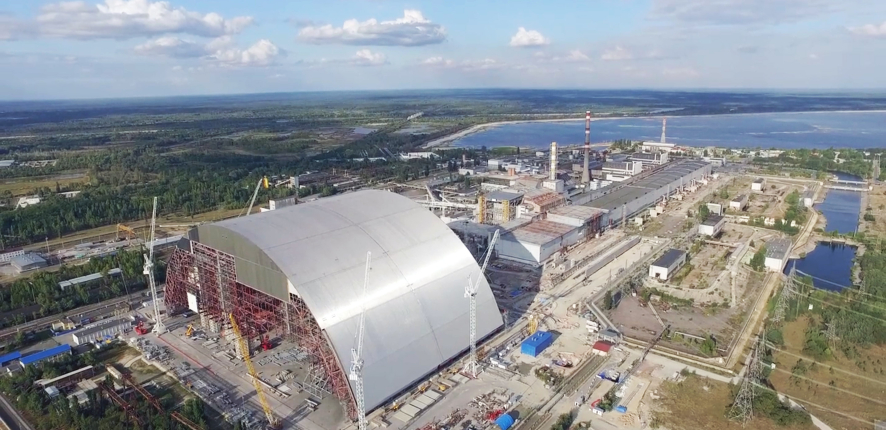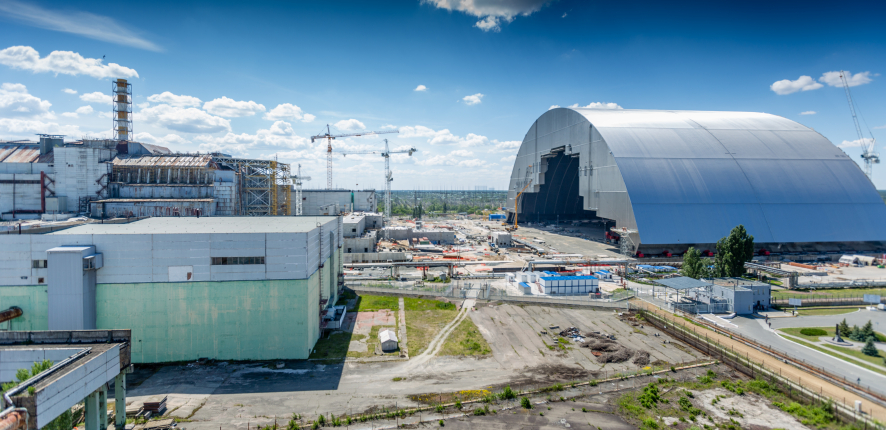Chernobyl

Chernobyl
An arch on a mammoth scaleCarried out by the Novarka consortium, of which Bouygues Travaux Publics is a member, the Chernobyl Confinement Arch project was exceptional, both in terms of its size and of the conditions under which it was undertaken.
Source : Sébastien Marcelle, La Dépêche du Midi (west edition), 25.04.2016
Challenge
Thirty years after the Chernobyl nuclear accident, the reactor that was damaged in 1986 and had been covered by a sarcophagus is now confined beneath an arch, which will enable it to be dismantled. Carried out by Novarka, a consortium made up of Bouygues Travaux Publics, a subsidiary of Bouygues Construction, and Vinci Construction Grands Projets, this project was remarkable in many ways.
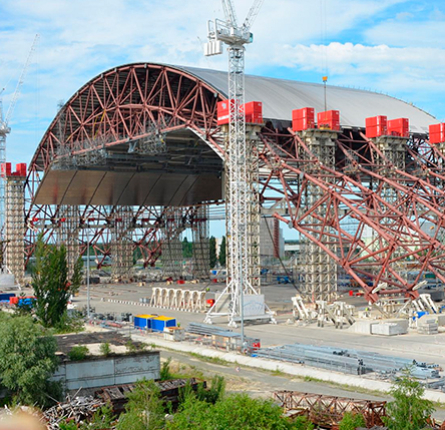

Innovation
Consisting of two metal structures weighing a total of 25,000 tonnes, the arch is 162 metres long, 108 metres tall, and its span measures 257 metres: it would fully cover the Stade de France or the Statue of Liberty! The new confinement has been designed to resist temperatures ranging from -43° C to +45° C, as well as a category 3 tornado and an earthquake registering VI on the Mercalli scale. Its estimated lifespan is approximately one hundred years.
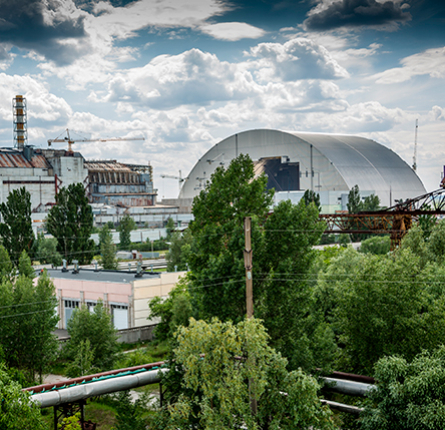

Human Capital
Carried out in Ukraine by a French consortium and financed by the EBRD (European Bank for Reconstruction and Development), this project could only have been performed with an international range of skills: the arch was manufactured in Italy, the external cladding contractor was a German-Turkish company, and lifting was subcontracted to a Dutch company. Also on-site were Ukrainian site engineers, Italian mountaineers to carry out work at height and Azerbaijanis who were used to working on offshore oil platforms for lifting work.


Responsible
Although the contract was signed in 2007, works only began in 2009. Two years were needed to “downgrade” the area where the arch was assembled, i.e. making it a “clean” zone where teams could work without needing specific protection. Cleaning this zone meant removing the top layer of soil and replacing it with an immense concrete raft as well as removing abandoned machinery and nuclear waste (the equivalent of one year’s production of nuclear waste in France). The level of radiation remained high in immediate proximity to the reactor unit. Consequently, as much work as possible was carried out remotely. Protective measures were taken when this was not possible.
